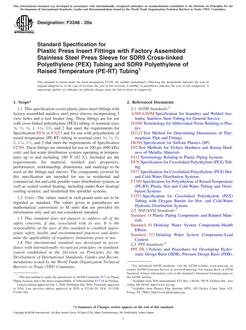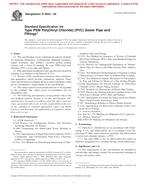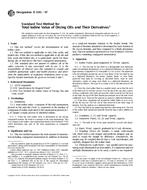1.1 This guide describes procedures for obtaining laboratory data concerning bioconcentration of a test material added to dilution water-but not to food-by freshwater and saltwater fishes and saltwater bivalve mollusks using the flow-through technique. These procedures also should be useful for conducting bioconcentration tests with other aquatic species, although modifications might be necessary.
1.2 Other modifications of these procedures might be justified by special needs or circumstances. Although using appropriate procedures is more important than following prescribed procedures, the results of tests conducted using unusual procedures are not likely to be comparable to those of many other tests. The comparison of results obtained using modified and unmodified versions of these procedures might provide useful information concerning new concepts and procedures for conducting bioconcentration tests.
1.3 These procedures are applicable to all chemicals that can be measured accurately at the necessary concentrations in water and in appropriate tissues. Bioconcentration tests are usually conducted on individual chemicals but can be conducted on mixtures if appropriate measurements can be made. Some techniques described in this guide were developed for tests on non-ionizable organic chemicals (see 11.1.2.1) and might not apply to ionizable or inorganic chemicals.
1.4 Results of bioconcentration tests should usually be reported in terms of apparent steady-state and projected steady-state bioconcentration factors (BCFs) and uptake and depuration rate constants. Results should be reported in terms of whole body for fishes and in terms of total soft tissue for bivalve mollusks. For fishes and scallops consumed by humans, some results should also be reported in terms of the edible portion, especially if ingestion of the test material by humans is a major concern. For tests on organic and organometallic chemicals, the percent lipids of the tissue should be reported.
1.5 This guide is arranged as follows:
| Section | |
| Referenced Documents | 2 |
| Terminology | 3 |
| Summary of Guide | 4 |
| Significance and Use | 5 |
| Safety Precautions | 7 |
| Apparatus | 6 |
| Facilities | 6.1 |
| Construction Materials | 6.2 |
| Metering System | 6.3 |
| Test Chambers | 6.4 |
| Cleaning | 6.4.4 |
| Acceptability | 6.5 |
| Dilution Water | 8 |
| Requirements | 8.1 |
| Source | 8.2 |
| Treatment | 8.3 |
| Characterization | 8.4 |
| Test Material | 9 |
| General | 9.1 |
| Radiolabeled Material | 9.2 |
| Stock Solution | 9.3 |
| Test Concentration(s) | 9.4 |
| Test Organisms | 10 |
| Species | 10.01 |
| Size | 10.02 |
| Source | 10.03 |
| Care and Handling | 10.04 |
| Feeding | 10.05 |
| Disease Treatment | 10.06 |
| Holding | 10.07 |
| Acclimation | 10.08 |
| Quality | 10.09 |
| Procedure | 11 |
| Experimental Design | 11.1 |
| Dissolved Oxygen | 11.2 |
| Temperature | 11.3 |
| Loading | 11.4 |
| Beginning the Test | 11.5 |
| Care of Organisms | 11.6 |
| Feeding | 11.7 |
| Cleaning | 11.8 |
| Biological Data | 11.9 |
| Measurements on Test Solutions | 11.10 |
| Analytical Methodology | 12 |
| Acceptability of Test | 13 |
| Calculation of Results | 14 |
| Documentation | 15 |
| Keywords | 16 |
1.6 This standard does not purport to address all of the safety concerns, if any, associated with its use. It is the responsibility of the user of this standard to establish appropriate safety and health practices and determine the applicability of regulatory limitations prior to use. Specific precautionary statements are given in Section 7.
Product Details
- Published:
- 10/10/2002
- Number of Pages:
- 18
- File Size:
- 1 file , 160 KB


